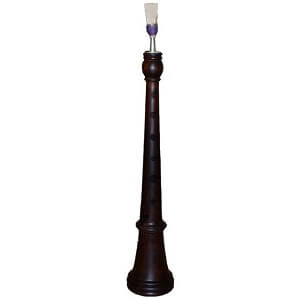Dulzaina
 The dulzaina, also known as dolcaina, is a double-reed instrument that is part of the oboe family. This instrument originated from Spain during the 14th century and is often used to replace the clarinet or oboe. Also, the dulzaina was first introduced in Spain through Arabic people. It is deeply rooted in the folklore of Soria, Segovia, Madrid, Toledo, Burgos, and Salamanca. In some Spanish regions like the Aragon and in the city, Huesca, the dulzaina is played as an accompaniment of drums or bagpipes.
The dulzaina, also known as dolcaina, is a double-reed instrument that is part of the oboe family. This instrument originated from Spain during the 14th century and is often used to replace the clarinet or oboe. Also, the dulzaina was first introduced in Spain through Arabic people. It is deeply rooted in the folklore of Soria, Segovia, Madrid, Toledo, Burgos, and Salamanca. In some Spanish regions like the Aragon and in the city, Huesca, the dulzaina is played as an accompaniment of drums or bagpipes.
Moreover, it can also be heard in the region of Castilla y Leon.The dulzaina has a distinguishable conical shape and can often be seen in Ukrainian or Armenian folk music.Interestingly, there are many types of dulzainas that exist in Spain. In Catalonia, the dulzaina is called Gralla, while it is called xirimita or dolcaina in the Valencian community. Meanwhile, in the Basque Country, the dulzainas are called Bolin-Gozo.
Typically, the range of the dulzaina in the concert pitch goes from A3 to E5. Occasionally, F#5 is used, although it needed to be the next note progression of the scale. Also, it has to slur on the previous note. In musical compositions, the music for the dulzaina was written in treble clef. In short, the scores written for this instrument should be transposed into the treble clef. With that, the lowest note would be placed in the first one below the treble clef staff, and the highest one should be on the first additional line just above the treble clef. To find the concert pitches in a score for the dulzaina, the notes must transpose up to a perfect fifth. It is also good to remember that unless stated otherwise, the notes or keys of the dulzaina that most players used are in G.